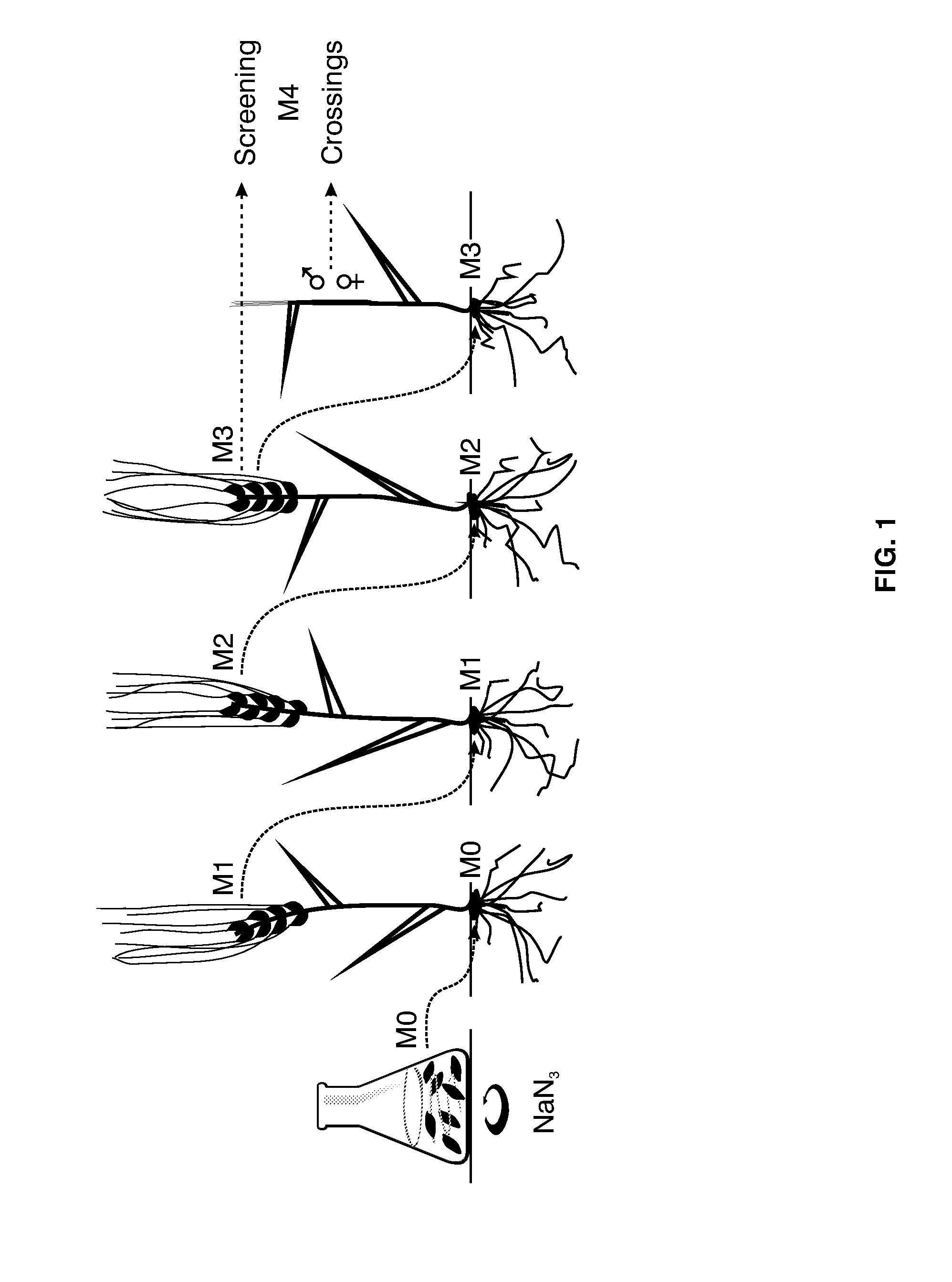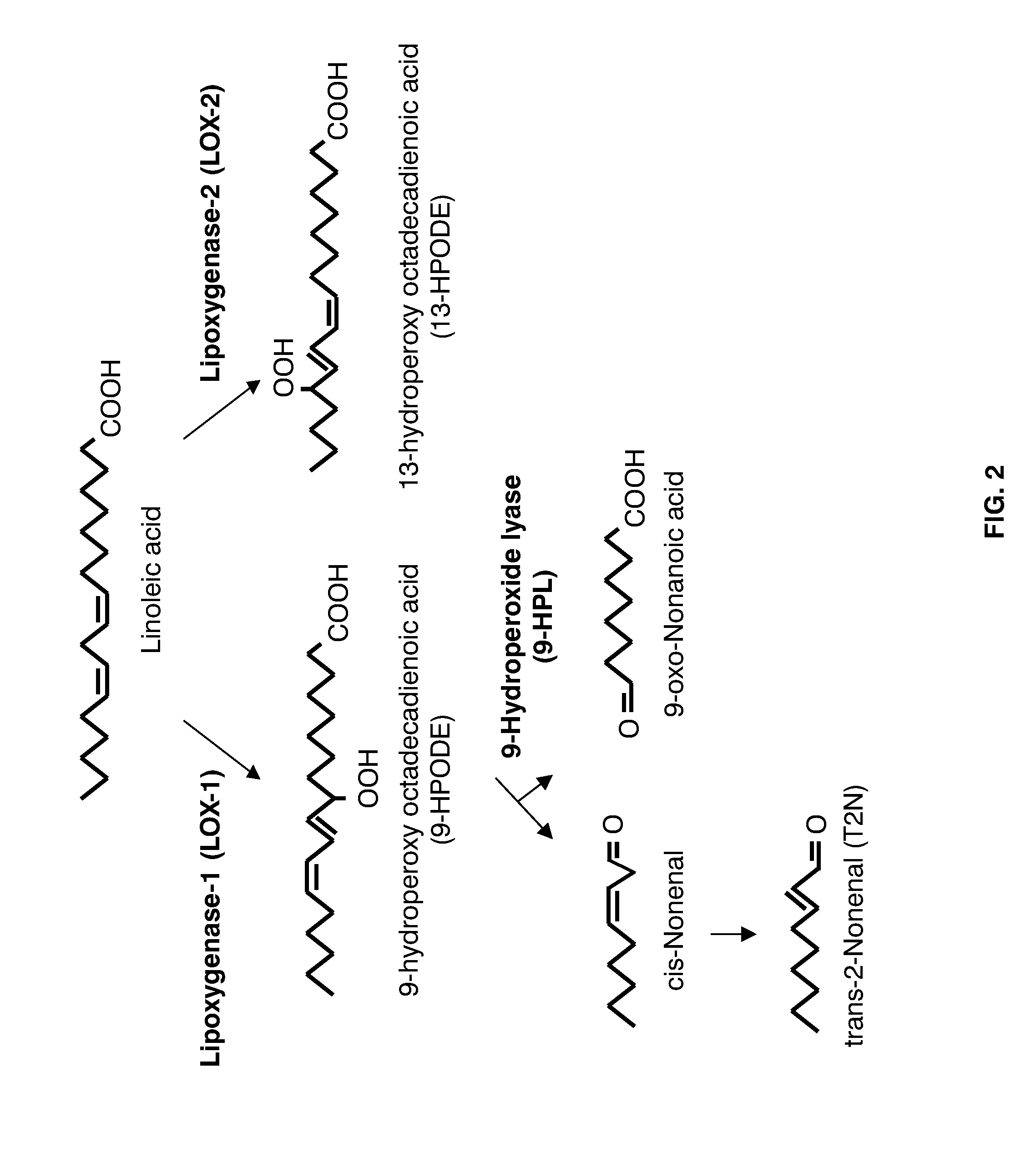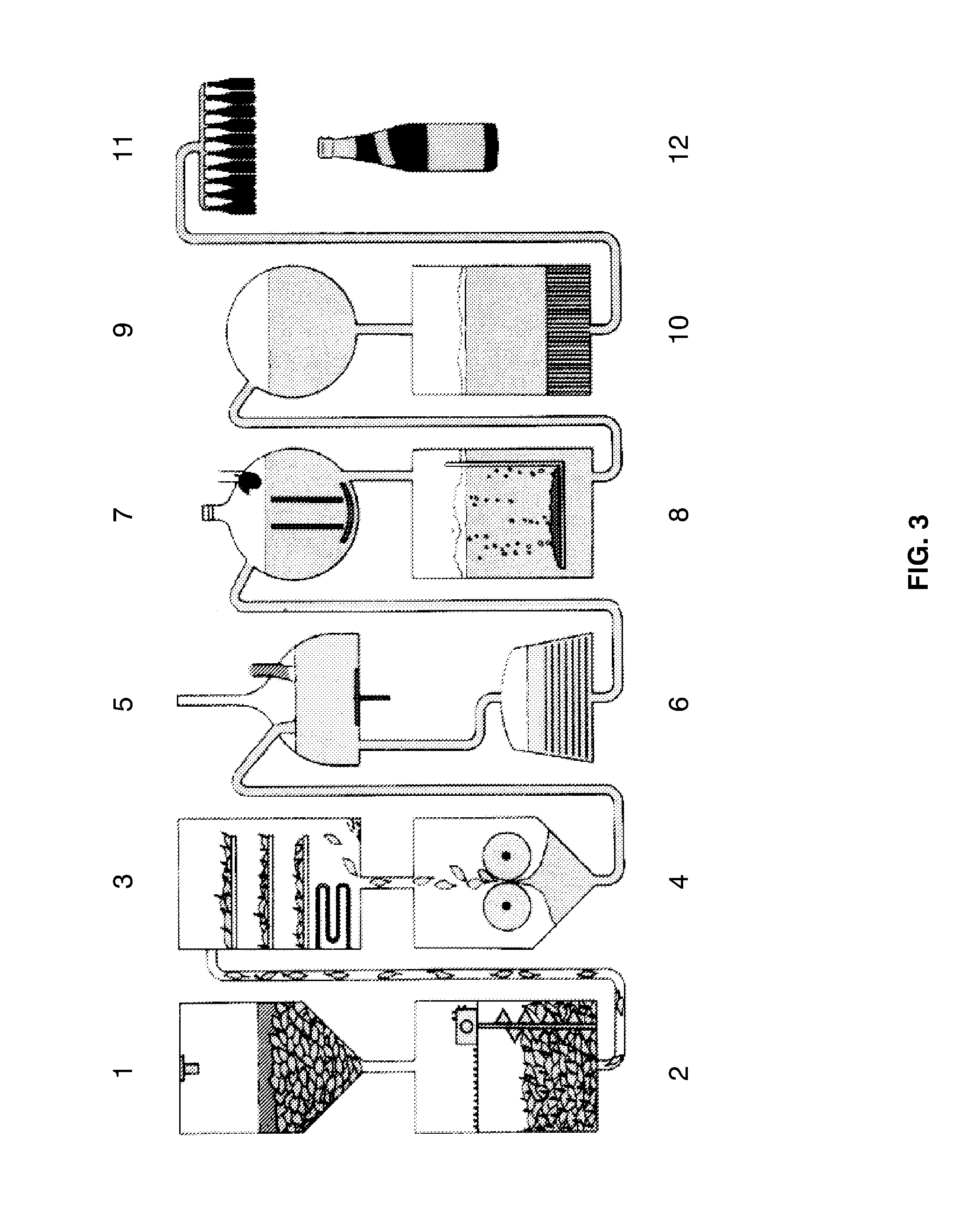Barley with reduced lipoxygenase activity and beverage prepared therefrom
a technology of lipoxygenase activity and barley, which is applied in the field of barley with reduced lipoxygenase activity and beverage prepared therefrom, can solve the problems of inability to achieve transgenic barley plants, and inability to achieve mutagenesis or successfully applied in barley. achieve the effect of low t2n potential
- Summary
- Abstract
- Description
- Claims
- Application Information
AI Technical Summary
Benefits of technology
Problems solved by technology
Method used
Image
Examples
example 1
Screening for Low LOX-2 Activity in Mutated, Mature Embryos of a Mutated Null-LOX-1 Population, Generation M3
[0260]LOX-1 and LOX-2 are both synthesized in the maturing barley embryo (with LOX-1 being the predominant enzyme), and also in the germinating embryo (with equal levels of both enzymes). For determination of LOX activities in thousands of samples, assays utilizing extracts of barley embryos would be most convenient. And in assays for LOX-2 levels, it would be highly advantageous to screen kernels of mutagenized null-LOX-1 barley, cf. WO 2005 / 087934.
[0261]Kernels were collected from barley plants of null-LOX-1 mutant D112 (described in WO 2005 / 087934 and deposited with ATCC under the number PTA-5487), and incubated with the mutagen NaN3 to induce point mutations in the barley genomic DNA. The experimental set-ups followed the recommendations provided by Kleinhofs et al. (supra).
[0262]Next, mutated grains of generation M1 were propagated in field plots through two subsequent g...
example 2
Screening for Low LOX-2 Activity in Germinating Barley Embryos
[0267]Improved screening material. Kernels collected from barley plants of null-LOX-1 line Ca211901—generated by the crosses (null-LOX-1 mutant D112×Jersey)×Sebastian—were incubated with the mutagen NaN3 according to the details provided by Kleinhofs et al. (supra). This procedure was chosen since it is known to induce point mutations in the genomic DNA of barley, eventually conferring amino acid residue substitutions or truncations in proteins encoded by the mutagenized DNA. In the mutagenesis experiments of the instant publication, it was chosen to propagate mutated grains of generation M1 in field plots through two subsequent generations, eventually yielding a high proportion of homozygous plants for screening purposes (cf. FIG. 1). While grains of generation M2 were not screened, primarily because these were expected to contain a relatively high proportion of heterozygous point mutations, mutant grains of generation M...
example 3
Barley Mutant A689
[0271]Analyses were conducted to establish whether null-LOX-2 plants of generations M4 and M5 were homozygous for the corresponding mutant phenotype. This type of analysis would help to determine whether the mutation was genetically recessive or dominant. Additionally, if plants of generation M3 were heterozygous for a dominant mutation, then individuals of subsequent generations would segregate for that phenotype.
[0272]Total LOX activity was measured in barley embryos of generations M3, M4, and M5 of mutant A689, and activities were not only compared with those of embryos of the mother line Ca211901, but also with null-LOX-1 mutant D112. Determination of LOX activity was as described in Example 1 of the instant publication. In all of the experiments, control samples included standard extracts from germinating embryos of the mother line, as well as heat inactivated, standard extracts from embryos of null-LOX-1 mutant line Ca211901 and mutant D112. For embryos of ge...
PUM
| Property | Measurement | Unit |
|---|---|---|
| taste-threshold | aaaaa | aaaaa |
| taste threshold level | aaaaa | aaaaa |
| pH | aaaaa | aaaaa |
Abstract
Description
Claims
Application Information
 Login to View More
Login to View More - R&D
- Intellectual Property
- Life Sciences
- Materials
- Tech Scout
- Unparalleled Data Quality
- Higher Quality Content
- 60% Fewer Hallucinations
Browse by: Latest US Patents, China's latest patents, Technical Efficacy Thesaurus, Application Domain, Technology Topic, Popular Technical Reports.
© 2025 PatSnap. All rights reserved.Legal|Privacy policy|Modern Slavery Act Transparency Statement|Sitemap|About US| Contact US: help@patsnap.com



